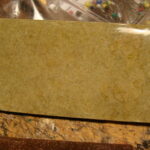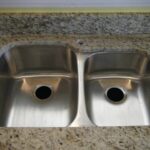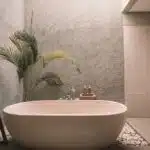Bathroom vanity tops play a crucial role in enhancing the overall aesthetics and functionality of your bathroom. The right choice of vanity top can not only complement the existing decor but also improve the storage capacity and durability of your bathroom fixtures. With so many options available, it can be challenging to determine which type of bathroom vanity top would be the most suitable for your space.
In this article, we will explore eight different types of bathroom vanity tops that are popular among homeowners and interior designers. From natural stone to engineered quartz, each type has its unique features and benefits that cater to specific needs and preferences. By understanding the pros and cons of each option, you can make an informed decision about which type of bathroom vanity top would best suit your lifestyle and budget while elevating the functionality and beauty of your bathroom.
Natural Stone Vanity Tops
Natural stone vanity tops are a popular choice among homeowners who want to elevate the look and feel of their bathroom. These vanity tops come in a variety of materials such as granite, limestone, and soapstone. Each material has its own unique color and pattern, making it easy for homeowners to find one that matches their personal style.
One of the biggest advantages of natural stone vanity tops is their durability. They are resistant to scratches, heat, and stains, which means they can stand up to daily wear and tear. However, it is important to note that some natural stones are more porous than others and may require sealing to prevent them from absorbing liquids.
When it comes to maintenance, natural stone vanity tops require some extra care compared to other materials. They should be cleaned regularly with a non-abrasive cleaner and a soft cloth. Harsh chemicals and abrasive sponges should be avoided as they can damage the surface of the stone. It is also recommended to avoid spilling acidic substances like vinegar or lemon juice on the surface as they can etch the stone.
Moving onto marble vanity tops…
Marble Vanity Tops
Continuing our discussion on bathroom vanity tops, let’s move on to the elegant and timeless option of marble. Marble vanity tops are a popular choice for those who want to add a touch of luxury to their bathroom. However, it is important to note that marble requires more maintenance than other materials.
Marble Vanity Maintenance: One of the biggest concerns with marble vanity tops is their susceptibility to stains and etching. Marble is porous and can easily absorb liquids, which makes it prone to staining. Additionally, acidic substances like lemon juice or vinegar can cause etching in the surface of the marble. To prevent these issues, it is recommended to seal your marble vanity top regularly and avoid using harsh cleaning products.
Pros and Cons of Marble Vanity Tops: Despite its maintenance requirements, there are many benefits to choosing a marble vanity top for your bathroom. Marble has a natural beauty that cannot be replicated by any man-made material. It also comes in a wide range of colors and patterns, so you can choose one that complements your bathroom décor perfectly. However, it is important to consider the cost when choosing a marble vanity top as it is generally more expensive than other options.
• The luxurious look and feel of marble evokes feelings of sophistication and elegance. • The natural variations in color and pattern create a unique and personalized look in your bathroom. • The high cost may deter some buyers from choosing this option. • The need for regular maintenance can be time-consuming for some homeowners.
In summary, while marble vanity tops require more maintenance than other materials, they offer unmatched beauty and elegance that cannot be replicated by any man-made material. If you are willing to invest in its upkeep, a marble vanity top could be the perfect addition to your bathroom renovation project. In our next section, we will discuss another popular option for bathroom vanity tops: granite.
Granite Vanity Tops
Granite vanity tops have always been a popular choice for homeowners due to their natural beauty, durability, and longevity. The theory that granite is an ideal material for bathroom vanities stems from its hardness and resistance to scratches, heat, and stains. Granite is available in various colors and textures, which makes it easy to match any bathroom décor. However, the truth behind the theory is that granite vanity tops require regular maintenance to keep them in good condition.
Pros of using granite vanity tops include their hardness, durability, and natural beauty. Granite vanity tops are resistant to scratches, heat damage, and stains which make them ideal for high traffic areas such as bathrooms. They add a touch of luxury to any bathroom design with their distinctive veining patterns and shades of color. Additionally, they can increase the resale value of your home because they are a desirable feature among potential buyers.
Cons of using granite vanity tops include their susceptibility to water damage if not properly sealed or maintained. They may also be more expensive than other types of materials used for bathroom vanities such as laminate or marble. Maintenance tips for granite vanity tops include sealing them regularly with a stone sealer and avoiding harsh chemicals that can damage the surface. If you spill anything on the surface of your granite vanity top, clean it up immediately to avoid staining.
Moving forward into the next section about quartz vanity tops – another popular material used for bathroom vanities – we will explore the similarities and differences between these two materials. While both granite and quartz offer unique benefits as materials for bathroom vanities, it is important to weigh the pros and cons before making a decision on which one is right for you.
Quartz Vanity Tops
Quartz vanity tops are a popular choice for bathroom vanities due to their durability and resistance to staining. Quartz vanity tops are easy to maintain, requiring only occasional wiping with a damp cloth for cleaning. Quartz vanity tops also provide a unique aesthetic to a bathroom, with a range of colors and patterns available. With proper maintenance, quartz vanity tops can last for many years, providing a long-term value for homeowners.
Benefits Of Quartz Vanity Tops
Quartz vanity tops have become increasingly popular in recent years due to their durability and aesthetic appeal. One of the notable benefits of quartz vanity tops is their low maintenance requirements. Unlike natural stone materials, quartz is non-porous and does not require sealing, making it an ideal choice for busy homeowners who prioritize convenience.
In addition to being low maintenance, quartz vanity tops also offer a range of pros over other materials. For instance, they are highly resistant to scratches, stains and chips, which means they can withstand everyday wear and tear without losing their shine. Additionally, they come in a wide variety of colors and patterns that can match any bathroom décor.
While there are many benefits to choosing quartz for your bathroom vanity top, it is important to consider the cons as well. One of the significant drawbacks of quartz is that it can be susceptible to heat damage if exposed to high temperatures caused by hot hair styling tools or candles. However, with proper care and maintenance, this issue can easily be avoided. Overall, the pros outweigh the cons when it comes to selecting a material for your bathroom vanity top, making quartz a great option for homeowners looking for an attractive and durable surface that requires little upkeep.
Maintenance Of Quartz Vanity Tops
When it comes to maintaining quartz vanity tops, it is important to understand that regular cleaning techniques can help ensure their longevity. Unlike natural stone materials, quartz is non-porous and doesn’t require sealing. This makes it easier to clean as there are no pores or cracks for dirt and bacteria to accumulate. However, this does not mean that quartz vanity tops don’t require any maintenance at all.
To keep your quartz vanity top in tip-top condition, it’s recommended to clean spills immediately with a mild detergent and water solution, followed by a rinse with clean water. Avoid using abrasive cleaners or scrubbers as they may damage the surface of the countertop. For tough stains like makeup or hair dye, use a non-abrasive cleaner specifically designed for quartz surfaces.
Overall, when compared to other materials such as marble and granite, quartz vanity tops are highly durable and require less maintenance. With proper care and cleaning techniques, you can enjoy your beautiful quartz vanity top for years without worrying about chips or scratches.
Solid Surface Vanity Tops
Solid surface vanity tops are a popular choice for homeowners looking for a sleek and modern look in their bathrooms. These tops are made from a blend of acrylic, polyester resins, and other materials that create a smooth, non-porous surface. This type of material is highly durable and can withstand daily use without showing signs of wear and tear.
One advantage of solid surface vanity tops is their versatility in terms of design. They come in a wide range of colors and patterns, making it easy to find one that matches the overall décor of your bathroom. Additionally, the non-porous surface makes cleaning a breeze since it doesn’t absorb moisture or bacteria. Regular maintenance only requires wiping down the surface with soap and water.
Another advantage of solid surface vanity tops is their durability. They are resistant to stains, scratches, and chipping from accidental impacts. Unlike natural stone materials such as granite or marble which require sealing every few years for protection against stains, solid surfaces do not require any special treatments.
To better understand the advantages and maintenance requirements of solid surface vanity tops, consider these key points:
- The material is non-porous, making it easy to clean with just soap and water.
- Solid surfaces come in many colors and patterns to match any bathroom décor.
- The material is highly durable and resistant to scratches or chipping.
In the next section, we will discuss laminate vanity tops which offer an affordable option for those on a budget without sacrificing style or durability.
Laminate Vanity Tops
Laminate vanity tops are a popular choice for many homeowners due to the affordability and versatility of the material. In fact, according to a recent survey, over 30% of bathroom renovations included laminate vanity tops as a top choice. Laminate is made from layers of paper or fabric that are bonded together with resin and then topped with a clear protective layer.
One of the main advantages of laminate vanity tops is their cost-effectiveness. They are much more affordable than other materials such as granite or marble, making them an ideal choice for those on a budget. Additionally, laminate comes in a wide range of colors and patterns, allowing homeowners to find the perfect match for their bathroom decor.
However, there are also some disadvantages to consider when choosing laminate vanity tops. They are not as durable as other materials and can easily scratch or chip. Laminate is also prone to water damage if not properly sealed or maintained. Despite these drawbacks, laminate remains a popular choice due to its affordability and versatility.
Cost Comparison with Other Materials:
| Material | Average Cost per Square Foot |
|---|---|
| Laminate | $15-$40 |
| Granite | $50-$200 |
| Marble | $75-$250 |
| Quartz | $60-$150 |
Moving on from laminate vanity tops, tile vanity tops offer another option for homeowners looking for a unique and customizable look in their bathrooms.
Tile Vanity Tops
Tile vanity tops offer a range of advantages over other types of materials, such as increased durability, easy maintenance and a wide variety of color and design options. However, tile vanity tops can also be difficult to install, require regular sealing and their grout lines can be difficult to clean. On the whole, tile vanity tops are a popular choice for those looking for an attractive and durable vanity top that is easy to maintain.
Advantages Of Tile Vanity Tops
When it comes to bathroom vanity tops, the tile option is a popular choice for many homeowners. Tile vanity tops offer several advantages that make them an attractive option. One of the main pros of tile vanity tops is their versatility in design. With various colors, shapes, and sizes available, homeowners have the flexibility to create a unique look for their bathroom.
Another advantage of tile vanity tops is their durability. Tiles are resistant to scratches and stains, making them an ideal choice for high-traffic areas like bathrooms. In case of any damage, tiles can be easily replaced without having to replace the entire countertop. However, it is important to note that tiled surfaces require regular maintenance and cleaning.
To keep your tile vanity top looking clean and new, it is essential to follow some maintenance tips regularly. The surface should be cleaned daily with a mild detergent or vinegar solution to avoid any buildup of dirt or grime. Avoid using harsh chemicals or abrasive cleaners as they may damage the surface of the tiles over time. Additionally, ensure that any spills on the surface are wiped off immediately to prevent staining.
In conclusion, tile vanity tops offer several benefits such as versatility, durability, and easy replacement options if damaged. However, these surfaces require regular maintenance and care to maintain their appearance and longevity. By following the proper cleaning techniques and avoiding harsh chemicals, you can enjoy your tile vanity top for years to come.
Disadvantages Of Tile Vanity Tops
While tile vanity tops offer a range of benefits, it is essential to consider the cons before making a final decision. One of the major drawbacks of tile vanity tops is their susceptibility to damage from impact or weight. Dropping heavy objects or placing excessive pressure on the surface can cause cracks or chips in the tiles, which may require extensive repairs.
Another disadvantage of tile vanity tops is their susceptibility to stains and grout discoloration over time. Grout lines between tiles are more prone to staining than the tiles themselves, requiring regular cleaning and maintenance. Moreover, grout lines may trap dirt and debris, leading to unsightly buildup that can be challenging to remove.
If you’re looking for alternatives to tile vanity tops, solid surface or quartz countertops could be a great option. These materials are durable, low-maintenance, and come in a range of colors and finishes. Additionally, they offer seamless installations with no grout lines for a sleek appearance that’s easy to clean. Ultimately, it’s essential to consider your needs and preferences before settling on any material for your bathroom vanity top.
Wood Vanity Tops
Wood Vanity Tops:
Wood vanity tops are a popular choice for homeowners who want a natural and warm look in their bathroom. They come in different types of wood, including oak, teak, and walnut. Wood vanity tops can also be stained to match the color scheme of the bathroom or left natural to highlight the unique grain patterns of the wood. However, before deciding on a wood vanity top, it is important to consider its pros and cons.
Pros:
- Natural and warm look
- Durable and long-lasting
- Can be customized with stains and finishes
Cons:
- Susceptible to water damage
- Requires regular maintenance
- Can be more expensive than other materials
To maintain and clean wood vanity tops, it is important to avoid using harsh chemicals that can damage the wood. Instead, use a mild soap or vinegar solution with warm water to wipe down the surface. Avoid leaving standing water on the surface as it can cause warping or splitting of the wood. Regularly applying a protective finish can help prevent water damage and keep the surface looking new.
Next up: integrated sink vanity tops. These types of vanity tops offer seamless integration between the sink and countertop, creating a sleek and modern look for any bathroom.
Integrated Sink Vanity Tops
Integrated sink vanity tops provide an aesthetically pleasing look and can make a bathroom feel more spacious. The installation process is generally easier than with other types of vanity tops as the sink is already included. The main benefit to an integrated sink vanity top is that it eliminates the need for a separate sink, reducing clutter and cost. Additionally, integrated sink vanity tops are easier to clean as there are no crevices for dirt and debris to collect.
Integrated Sink Benefits
When it comes to bathroom vanity tops, an increasingly popular option is the integrated sink vanity top. This type of vanity top combines the sink and countertop into a single, seamless unit, which can offer several benefits to homeowners. One key advantage of these tops is their ease of installation; with no separate sink to mount, installation can be quicker and simpler than with other types of vanity tops.
Another benefit of integrated sink vanity tops is their low maintenance requirements. Because there are no seams or joints between the sink and countertop, there are fewer areas for dirt and grime to accumulate. Additionally, because the sink is part of the countertop itself, there is no need to worry about a separate faucet or drain assembly becoming loose or leaking over time. However, it’s important to note that proper maintenance is still necessary in order to keep these tops looking their best; regular cleaning with non-abrasive cleaners is recommended.
If you’re considering an integrated sink vanity top for your bathroom remodel, there are a few installation tips to keep in mind. First and foremost, make sure that your plumbing connections are compatible with this type of top; some models may require specific types of drain or faucet assemblies. Additionally, since these tops typically come in one pre-fabricated piece, it’s important to measure carefully before purchasing in order to ensure a proper fit. With proper installation and maintenance, an integrated sink vanity top can be a beautiful and functional addition to any bathroom.
Installation Process
When it comes to installing an integrated sink vanity top, there are a few important considerations to keep in mind. First and foremost, you’ll need to ensure that your plumbing connections are compatible with this type of top; some models may require specific types of drain or faucet assemblies. In addition, you’ll want to measure carefully before purchasing in order to ensure a proper fit.
Once you have your integrated sink vanity top in hand, the installation process can begin. Some common tools that may be needed include a drill, screws, and silicone adhesive. One potential mistake to avoid during installation is over-tightening screws, which can cause damage to the countertop or sink. It’s also important to follow any specific instructions provided by the manufacturer for proper installation.
Overall, while the installation process for an integrated sink vanity top may require some careful planning and attention to detail, the end result can be well worth it. With their seamless design and low maintenance requirements, these tops can be a stylish and functional addition to any bathroom space. By following best practices during installation and properly maintaining your vanity top over time, you can enjoy years of use and enjoyment from this investment in your home.
Undermount Sink Vanity Tops
Integrated sink vanity tops offer a seamless and contemporary look to any bathroom. However, if you prefer a more traditional look or simply want more customization options, undermount sink vanity tops might be the way to go. Undermount sinks are installed beneath the countertop, leaving the edge of the counter exposed. This allows for more design options, such as choosing a different color or material for the sink than for the countertop.
When it comes to maintenance, undermount sinks require a bit more care than integrated sinks. Because there is no lip between the sink and countertop, water can easily seep into the cracks and cause damage over time. To prevent this, it’s important to dry off the sink and surrounding area after each use. Additionally, avoid using abrasive cleaners that could scratch or damage the surface of both the sink and countertop.
Undermount sink installation requires some expertise and should ideally be done by a professional. The process involves cutting precise holes in both the countertop and sink before attaching them together with silicone adhesive. If done correctly, an undermount sink can provide a sleek look while also being functional and durable.
Next up is vessel sink vanity tops – another popular option for those looking to add some personality to their bathroom space. With unique shapes and styles available in materials ranging from glass to stone, vessel sinks can be a real statement piece in your home’s bathroom design.
Vessel Sink Vanity Tops
Vessel sink vanity tops are a popular choice for modern and contemporary bathroom designs. These types of vanity tops are designed to hold a vessel sink, which sits on top of the countertop rather than being recessed into it like traditional sinks. This creates a unique and stylish look that can be customized with different materials, colors, and shapes.
Pros and Cons:
One of the biggest benefits of choosing a vessel sink vanity top is the wide range of design options available. Vessel sinks come in many different materials such as glass, stone, porcelain, and even copper. This allows homeowners to create a truly custom look that matches their personal style. However, vessel sinks do require more maintenance than traditional sinks since they sit on top of the countertop and can collect debris around the edges.
Styling Tips:
When choosing a vessel sink vanity top, it’s important to consider the overall style of your bathroom. For example, if you have a modern bathroom with clean lines and minimalistic décor, you may want to choose a sleek glass or porcelain vessel sink. On the other hand, if you have a rustic or farmhouse-style bathroom, you may want to opt for a stone or copper vessel sink. Additionally, consider pairing your vessel sink with an open shelf vanity base to showcase its unique design.
In summary:
Vessel sink vanity tops offer homeowners versatility in design choices but require more maintenance than traditional sinks due to debris collection. When styling your bathroom with this type of vanity top, consider matching it with your overall bathroom style for best results. In the subsequent section about single sink vanity tops, we will explore another popular option for those looking to upgrade their bathroom vanities.
Single Sink Vanity Tops
Single sink vanity tops are most commonly constructed from materials such as marble, granite, quartz, and ceramic for both aesthetic and durability reasons. Design options for single sink vanity tops range from traditional to contemporary and include a variety of edge treatments and color options. Installation for single sink vanity tops typically requires anchoring the vanity top to the vanity base and making necessary connections for plumbing and electrical. Specialty installation may include the use of epoxy or mortar to secure the single sink vanity top in place. Proper care after installation of single sink vanity tops such as avoiding abrasive cleaning materials and sealing surfaces can help to extend the life of the vanity top. Single sink vanity tops can be a great way to upgrade the look of a bathroom while providing a useful and practical function.
Materials
Bathroom vanity tops are the crowning glory of any bathroom, setting the tone for the decor and providing a practical surface for daily use. When it comes to single sink vanity tops, there is a wealth of materials to choose from, each with its own unique benefits and drawbacks. One popular option is marble, which offers timeless elegance and natural beauty. However, it can be prone to scratches and staining, so regular maintenance is key. Another great choice is quartz, which is highly durable and resistant to heat and stains. It also comes in an array of colors and patterns for maximum customization.
For those looking for eco-friendly options, recycled glass and concrete are both excellent choices. Recycled glass offers a stunningly unique look with its colorful mosaic-style design, while concrete provides a minimalist yet stylish finish that can be customized with different pigments and finishes. Both materials require minimal maintenance but should be sealed regularly to prevent damage.
When it comes to maintaining your single sink vanity top, there are a few tips to keep in mind regardless of the material you choose. Always wipe up spills immediately to prevent staining or etching, and use gentle cleaning products that won’t harm the surface. Avoid using abrasive cleaners or scrubbers that could scratch or dull the finish over time. With proper care, your bathroom vanity top can remain beautiful and functional for years to come.
In conclusion, choosing the right material for your single sink vanity top requires careful consideration of your personal style preferences as well as practical concerns such as durability and maintenance requirements. Whether you opt for classic marble or eco-friendly recycled glass, following basic maintenance tips will ensure your investment stays looking its best over time.
Design Options
When it comes to designing your single sink vanity top, there are plenty of options available to suit any style or budget. One popular choice is a custom-built wooden vanity, which can be tailored to your exact specifications and finished with a variety of stains or paints. This option offers endless design possibilities but can be prone to wear and tear over time if not properly maintained.
Another great option is a pre-fabricated solid surface vanity top, such as those made from Corian or Swanstone. These materials offer a sleek and modern look that is highly durable and resistant to staining, scratches, and heat damage. However, they may require professional installation and can be more expensive than other materials.
For those looking for a budget-friendly option with maximum versatility, laminate is an excellent choice. Available in a wide range of colors and patterns, laminate can mimic the look of more expensive materials such as granite or marble at a fraction of the cost. However, it may not be as durable as other materials and can be prone to chipping or peeling over time if not properly maintained.
Regardless of the material you choose for your single sink vanity top, it’s important to follow proper maintenance tips to ensure it stays looking its best for years to come. This includes wiping up spills immediately to prevent staining or etching, using gentle cleaning products that won’t harm the surface, and avoiding abrasive cleaners or scrubbers that could scratch or dull the finish over time. By taking these steps and carefully considering your design options, you can create a beautiful bathroom space that meets all of your needs while staying within your budget.
Installation Process
When it comes to installing a single sink vanity top, there are several important steps and tools required to ensure a successful and long-lasting installation. Before beginning the installation process, it’s important to carefully measure the space where the vanity top will be installed and choose a material that fits your needs and budget. Once you have selected your vanity top material, you can begin preparing for the installation process.
To install a single sink vanity top, you will need a variety of tools including a drill, screwdriver, level, caulking gun, and adhesive. Before installing the vanity top, it’s important to ensure that the cabinet or base is level and sturdy enough to support the weight of the countertop. Next, apply adhesive to both the cabinet and bottom of the countertop before carefully lowering it into place.
Once the vanity top is in place, use screws or brackets to secure it to the cabinet or base. Finally, use a caulking gun to seal any gaps between the countertop and wall or backsplash. With proper preparation and installation techniques, your new single sink vanity top can provide years of beauty and functionality in your bathroom space.
Double Sink Vanity Tops
Double sink vanity tops are a popular choice for homeowners who have large bathrooms or who share their space with a significant other. These tops come in a variety of materials, including quartz, granite, marble, and solid surface. Design trends for double sink vanity tops include natural stone patterns, sleek and modern silhouettes, and bold color choices.
When it comes to installation tips for double sink vanity tops, it’s important to make sure that the top is securely fastened to the base cabinet. This not only ensures that your sinks won’t move around but also prevents any water damage from occurring. Additionally, consider the placement of your faucets and drain lines before installation. It’s much easier to make adjustments beforehand rather than having to redo the plumbing after the fact.
Overall, double sink vanity tops offer both style and function in the bathroom space. Whether you opt for a classic marble look or something more contemporary like a concrete finish, there are plenty of options available on the market today. Keep design trends and installation tips in mind when selecting your double sink vanity top to ensure that you get a product that will last for years to come.
As we’ve discussed some of the key features of double sink vanity tops above, let us now explore custom vanity tops in further detail. With custom options available for size, shape, material type and finishes; homeowners can create unique pieces perfectly suited to their needs and preferences.
Custom Vanity Tops
Custom vanity tops are the perfect addition to any bathroom, adding a touch of elegance and uniqueness to your space. They offer a level of customization that simply can’t be found with pre-made options, allowing you to tailor your vanity top to your specific needs and style preferences. With a custom design, you have complete control over everything from the size and shape of your vanity top to the materials used in its construction.
When it comes to material options for custom vanity tops, the possibilities are virtually endless. From natural stone like granite and marble to engineered materials like quartz or solid surface, there is sure to be a material that perfectly suits your aesthetic preferences and functional requirements. Each material has its own unique characteristics and benefits, so it’s important to do some research before making a final decision.
With so many choices available when designing a custom vanity top, it can be overwhelming trying to decide where to begin. To make things easier, consider breaking down your decision-making process into three key areas: budget, aesthetics/style preference, and functionality/usage requirements. By focusing on these three factors, you’ll be able to create a custom design that not only looks great but also meets all of your practical needs.
Choosing the right vanity top for your bathroom requires careful consideration of several factors such as size, style preference, durability, ease of maintenance and installation cost among others. In the next section we’ll explore the different types of bathroom vanity tops available in the market today and help you choose one that best suits your needs.
Choosing The Right Vanity Top For Your Bathroom
When it comes to choosing the right vanity top for your bathroom, there are many different options available. The type of material you choose will depend on your budget, design preferences, and maintenance requirements. Some popular choices include marble, granite, quartz, and ceramic tile.
Marble is a luxurious option that offers a timeless look. However, it can be quite expensive and requires regular maintenance to prevent staining and etching. Granite is another high-end option that offers durability and resistance to scratches and heat. It also comes in a range of colors and patterns. Quartz is a great choice for those who want the look of natural stone without the maintenance requirements. It’s also resistant to stains and scratches.
If you’re on a tight budget or looking for DIY vanity top ideas, there are several options available. Laminate is an affordable choice that comes in a variety of colors and patterns. It’s also easy to install yourself. Solid surface materials like Corian are another budget-friendly option that offer durability and versatility in terms of design options. Finally, ceramic tile is an excellent choice for those who want complete control over the design of their vanity top. It’s also easy to clean and maintain.
| Material | Pros | Cons | Maintenance |
|---|---|---|---|
| Marble | Luxurious look | Expensive; requires regular maintenance | Regular sealing |
| Granite | Durable; scratch- and heat-resistant; many color options | Expensive; may require resealing 1-2 times per year | Regular sealing |
| Quartz | Natural stone look without maintenance requirements; stain- and scratch-resistant | More expensive than laminate or tile; limited color options compared to other materials | Low maintenance |
In conclusion, there are plenty of options available when it comes to choosing the right vanity top for your bathroom. Whether you’re looking for a high-end material like marble or granite or something more budget-friendly like laminate or ceramic tile, there’s a choice out there for everyone. Consider your design preferences and maintenance requirements when making your decision.
Conclusion
When it comes to choosing the perfect bathroom vanity top, there are a variety of options available to suit any taste and budget. Natural stone vanity tops, such as marble and granite, offer durability and elegance, while quartz and solid surface options provide a more modern look. Single sink vanity tops are ideal for smaller bathrooms, while double sink options are great for larger spaces.
For those seeking something truly unique, custom vanity tops can be designed to fit specific dimensions and style preferences. It’s important to consider factors such as maintenance requirements, cost, and overall aesthetic when selecting a bathroom vanity top that will meet your needs.
According to industry statistics, the most popular material for bathroom vanity tops is currently quartz. This versatile option offers many color choices and requires minimal upkeep compared to natural stone alternatives. No matter which type of vanity top you choose for your bathroom remodel or renovation project, working with an experienced professional can help ensure a successful outcome that meets all of your design goals.
Image Credits
- “Detail at eco-modern bathroom vanity” by paintchipdiaries (featured)





























